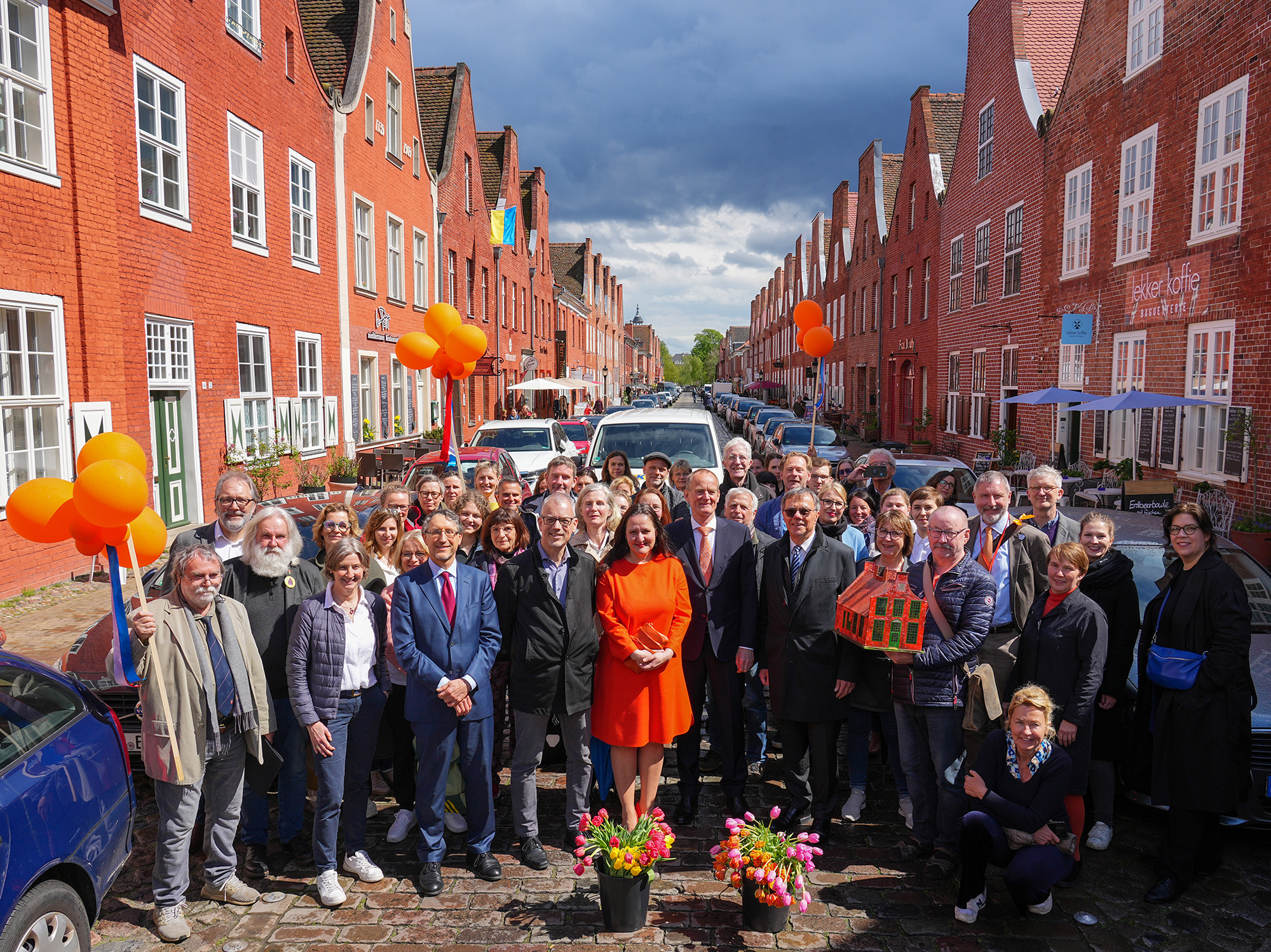
Potsdam’s former waterway
The Potsdam city canal, about a kilometer and a half in length, was first dug in 1673 to drain the swampy terrain of the Great Elector’s new second residence. From 1722 on, at the behest of the Soldier King Frederick William I, the channel was systematically straightened and redesigned in the style of a Dutch canal. Like its Netherlandish models, it was intended to drain the land for the first Baroque expansion of Potsdam.

The canal was fed by the Havel River and flowed through the center of Potsdam over a total length of 1,840 meters. It began in the east at the Cellar Gate and ran westward along the streets Am Kanal and Yorckstraße. At the present-day Dortustraße, it bent toward the south, flowing past the Watergate and back into the Havel.
The walls of the canal were built of red brick, and a total of nine bridges crossed the waterway. Between the white drawbridges, which were also erected as prototypes in the first residential city of Berlin, the canal formed an atmospheric backdrop with around two hundred linden trees lining its banks. Some of the bridges were elaborately adorned with sandstone figures. In the early eighteenth century, the street now known as Am Kanal was the finest street in the residential city—after the Alter Markt, where ministers and high royal officials lived.

The canal served for drainage and to regulate the groundwater level, an issue of immense importance given the wooden pilings used for structures in Potsdam. Yet the canal also played a key role in transportation and trade. Under Frederick the Great, the fish market was moved to Wilhelmplatz, the modern-day Platz der Einheit: the king ordered the change of location when he grew tired of the fish smell beneath his study window overlooking the modern-day Otto-Braun-Platz. Frederick also had the wooden bridges renovated in sandstone. Some of them were decorated with elaborate sculptures; the figures from the Breite Brücke still exist today. In the eighteenth century, monumental city gates were constructed where the canal flowed into and out of the Havel River. After World War II, the canal was filled in by order of the city council, and beginning in the early 1970s it served as a main traffic artery across the Havel.
The canal is now a registered historic monument. Two sections, along the street Yorckstraße and at the Cellar Gate, have once again been excavated and renovated. Along with the Dutch Quarter, it is considered the most important legacy of Dutch immigrant culture in Potsdam.
– Willo Göpel, Chairman of Bauverein Potsdamer Stadtkanal von 1722 e.V.

This item was taken from the audio walk “Holland in Potsdam”, which was created on the occasion of the exhibition “Clouds and Light. Impressionism in Holland” (8 July – 22 October 2023) and leads to 20 different places in Potsdam with a Dutch connection. Like its predecessor projects “Italy in Potsdam” and “France in Potsdam”, the city tour is permanently available as a free audio tour on the Barberini App and will also be published in the course of 2023 as a art guide in the series of publications of the Stiftung Preußische Schlösser und Gärten.
Header Image: Beginning of the Reconstructed City Canal at Kellertor │ Photo: Willo Göpel



